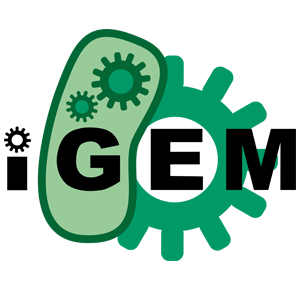Team:UiOslo Norway
From 2014.igem.org
MicrOrganizer
- the e.coli bodybuilder
Idea
One of the most fundamental distictions in nature is the one between unicellular and multicellular organismens. Multicellular organismens, like humans, can preform a wide specter of different tasks due to the highly ordered and differentiated system of cells. This ability is lacking from the simpler unicellular organismens like E.coli.
But it is possible to build complex ordered structures from bacteria? Is it possible to manipulate E.coli to become artificially multicellular? The UiOslo_Norway team has taken the challenge and is aiming to build a micro organizer – a system for organizing E. coli in a predetermined way. In our project we are trying to create biobricks that at the same time gives E. coli surface identity, binds physically to other bacteria according to their surface identity and transfer a signal to the inside of the bacteria about its binding state. This signal can again be used to select for only those bacteria that have bound to each other in the correct configuration. This will make it possible to build and preserve any desired configuration of different bacteria. Thus bacteria can be units in even more complex genetically engineered machines where each type of bacteria has its own function and location in complex multistep procedures. The system should have a wide variety of applications and could be used in for instance biological manufacturing, remediation processes, and biocomputers.
The System
So what kinds of biobricks could possibly fulfill these tasks? The answer is split enzymes coupled to autoexporter proteins from E. coli. Split enzymes are enzymes consisting of two or more separated parts that will only work when they are assembled correctly. The enzyme parts also have a natural affinity for each other and can assemble and give activity in solution. By expressing different parts of the enzyme on the surface of different bacteria, the bacteria will have a unique surface identity and the potential to bind to the bacteria with the matching enzyme part. Only interacting bacteria will give enzyme activity and this activity can be used to select against unbound bacteria by inducing or inhibiting the bacterias gene expression. The autotransporter makes sure the enzyme parts are presented and attached to the bacterial surface.
Our Projects
We are trying to build such a system by using the Lac Z gene. This gene codes for β-galactosidase which can be split into two parts β-galactosidase-α and β-galactosidase-β. The fuctional enzyme consisting of one alpha and one beta part hydrolyses lactose into galactose and glucose. This process produces on some occasions allolactose which induces the Lac-operon. This connection between the enzyme product and the Lac operon provides the needed signalling mechanism. We have isolated some different autotransporters and have not yet decided which to use.
 "
"

